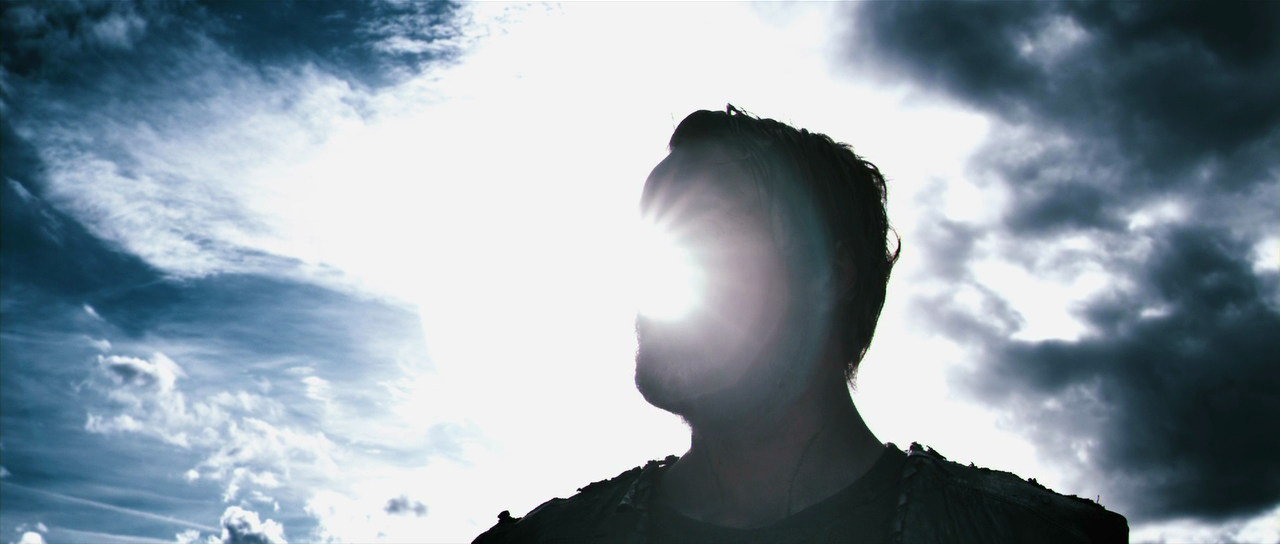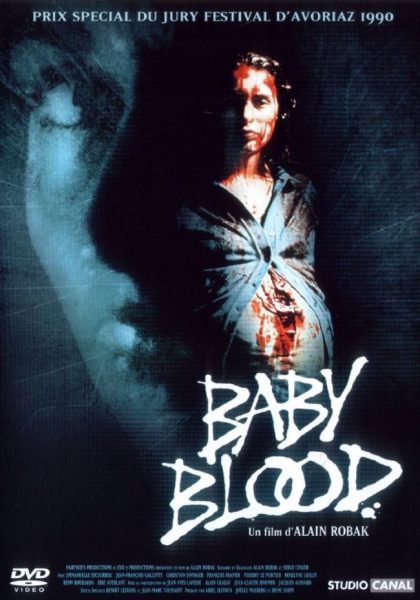| From http://s3.amazonaws.com/auteurs_production/post_images/ 19813/1967_TwoorThreeThings_Italian.jpg?1446724861 |
Director: Jean-Luc Godard
Screenplay: Catherine Vimenet and
Jean-Luc Godard
Cast: Marina Vlady (as Juliette
Jeanson); Roger Montsoret (as Robert Jeanson); Anny Duperey (as Marianne);
Raoul Lévy (as John Bogus, the American); Jean Narboni (as Roger); Juliet Berto
(as Girl talking to Robert); Christophe Bourseiller (as Christophe Jeanson)
 Synopsis: For over eighty five minutes Jean-Luc Godard depicts the cultural climate of Paris and France in
1967, following a housewife, Marina Vlady (Jeanson),
who has to moonlight as a prostitute for additional income. Following primarily
women who cross Marina's path, an unseen narrator voiced by Godard himself assesses how language has
changed, in brightly coloured scenes, now advertising and magazines exist.
Synopsis: For over eighty five minutes Jean-Luc Godard depicts the cultural climate of Paris and France in
1967, following a housewife, Marina Vlady (Jeanson),
who has to moonlight as a prostitute for additional income. Following primarily
women who cross Marina's path, an unseen narrator voiced by Godard himself assesses how language has
changed, in brightly coloured scenes, now advertising and magazines exist.
After years of transitioning from
viewing Jean-Luc Godard as an
overrated director for me to being a highly admirable one I hold highly, a huge
point to make from my perspective after having to work hard viewing his films
originally is that it's not a good idea to try to explain every theme,
quotation and image in a single Godard
film in terms of having a single, complete connection and meaning, as if they
are solidified quantities in only one form. Godard
not so long after starting his career, at beginning with Contempt (1963), decided to make his films even if they had plots
hung over them the cinematic equivalents of his personal journals; the quotations
and techniques meant to interconnect with every other one in the films but,
like a stream of consciousness if you wrote whatever came to mind in a diary,
his work gladly jumps to each one by what felt appropriate for the mood at the
moment of each scene. When he claimed cinema was dead with Week End (1967), and went onto the Dziga Vertov group and then onto the video made essay work with his
future collaborator and life partner Anne-Marie
Miéville, not even his "second debut" Slow Motion (1980) would be like the films he made before as he
continued diving further into the deep end of his style, refusing to come back.
| From http://designobserver.com/media/images/Two_or_Three_Things1.jpg |
In depicting the life of a wife,
happy in her life with two children but working on the side as a prostitute,
over a small span of time, Godard is
able to weave in the many things that exist within her timeframe, the clothes
shops and cafes in their colourful details to the words found on both
billboards and spoken aloud by people around her. The Vietnam war is looming
over the film, as if the state of France at the time which Godard is heavily critical of in his narration. With Two
Or Three Things I Know About Her, like Godard's
other work, a huge factor with viewing them is continually having to absorb
materials and ideas that are thrown in rapid quantities every minute. A lot has
to be absorbed in his films, and baring the time dated content of France at the
point this film was released, a year before the May 1968 riots that shock the
country, Godard wanted to tackle the
state of modern society in full detail in only a very short length. He does
however sum the film's point early on, helping the viewer, when a character
says language is a house people live in. Language and its use, and misuse, is a
huge theme for his work that would continue onwards, the barrage of visual and
audio stimuli in his films at this point in his career as much a permanent,
ongoing obsession with the vagueness of language, culminating decades later by
the time of Film Socialisme (2010) reduced to a YouTube clip of two kittens making noises as if they're talking to
each other in the middle of a work saturated in language.
| From http://deeperintomovies.net/journal/image14/23things6.jpg |
Parodies of Godard's filmmaking
style and French art cinema eventually fail when you go beyond his obsession
with shooting actors speaking obtuse proclamations whilst smoking, as from the
moment he used jump cuts in his debut, originally seen as mistakes due to bad
editing, he discovered how to manipulate everything within a film and what made
such a film in creation. He could even manipulate the opening and ending
credits - finding words in the middle of others, playing with their colour and
font - and took a swan dive into using anything visual or audio related,
everything with a film itself, in his work to explain his views and how
language could be distorted. (A
testament to this is that his last film in his eighties, Goodbye to Language (2014) was
made in 3D with a camera he had built personally to be able to do so). As a
result of this, not only does this film still have relevant moments to the
current day, the level of visual stimuli in billboards and advertisements worse
with the internet, but his almost pop-art colours and inventiveness help were
the ideas may be difficult to understand clearly on a first viewing, the depth
of the little games he plays expansive. Allusions in allusions, double meanings
and references, a break taking and prolonged sequence with the bubbles in a
black coffee becoming like stars in a galaxy, as Godard as the narrator admits language has become vague and
difficult for himself to use, next to moments that are clearly absurd and
humorous such as the man who checks the water meter appearing when the female
occupant is in the bath.
| From http://www.unsungfilms.com/wp-content/uploads/ 2012/08/2-or-3-things-i-know-about-her_03.jpg |
Technical Details:
The scope in how much Godard manipulates his film texture
could compile a whole book just to chronicle this single film. Important for this
film thought particularly is editing, particularly as within the content of
each scene being depicted he is careful to make every detail, every passing
comment made by a bystander stand out, all coming together for the theme of a
very consumerist world. Moments when he lets the camera slow move across a
scene without the heavy editing, such as a scene when Juliette takes her
daughter to day care, allow both the film to breathe but still have a lot of
details in the background to pay attention to too.
After his debut Breathless (1960), a scrappy and
energised work where the tracking camera shots were memorably created by using
a wheelchair the crew got hold of, Godard
would take advantage of how he became successful and had access to what Orson Welles called the "giant
train set" in the type of technical quality he had at hand by using
everything from the CinemaScope lens to the colour to a greater end than with
other directors. The dynamic nature of his films, particularly when they get to
the colour entries, have a greater pop than a lot of his contemporaries,
paradoxically the most esoteric director of the French New Wave besides Jacques Rivette also being the most
colourful and playful of many in terms of how energetic he could be. A reason
why I grew to admire Godard
eventually, which you see in this film through its ability to pack so much into
its short length, is how he is able to convey a message both concisely but
offer multiple meanings in one image or statement within a single moment.
 |
| From https://farm4.staticflickr.com/3570/3798000394_3c1bec6d3e.jpg |
Abstract Spectrum: Experimental/Expressionist
Abstract Rating (High/Medium/Low/None): High
Godard managed to make films entirely of his own genre, Godardian,
but it depends on which particularly films which are the most
"Godardian" of the lot. Détective
(1985) [Reviewed Here] was a narrative feature which was still primarily
influenced by its plot despite its many tangents. Week End on the other hand, even though it has a narrative thread,
takes its lead from Alice In Wonderland
and entirely throws its protagonists into an extreme direction, a series of
jokes, political provocations and absurdities that wash over the viewer forcing
them to follow its logic completely. With Two
Or Three Things I Know About Her, while a later work like Film Socialisme would take its
structure and style further, the older film from the sixties is still
completely unpredictable in how it manipulates and changes directions in what
it does, its theme of language and popular culture filtered through the many
issues and mediums that were there at the time; aptly, shots of two men behind
a giant pile of books, one of them recording down a random paragraph the other
reads from various types of literature to make one text, is an appropriate
metaphor for the film around the duo as
a whole, the scramble of tones and words around the characters shown in
unfiltered form with Godard himself
trying to make sense of it for himself as much as for the viewer.
It is a film where a random
female bystander, one of many, can suddenly talk directly to the camera about
her life, forcing the viewer to engage with her about her life, where an
incredibly young Juliet Berto can suddenly appear in a cameo
scene as well as if a prequel to her character in Celine and Julie Go Boating (1974). Bertolt Brecht is immediately quoted in the opening and Godard already undermines the forth wall
soon after this when the narrator introduces the female protagonist played by Jeanson twice as two people and
describes head movements that he later says are pointless to inform the viewer
about. For Godard, in the early
beginnings of his career, there was already a disregard with conventions about
what tone and style in conventional filmmaking should be, leading to films like
this one which he would build upon throughout the decades after.
 |
| From https://farm3.staticflickr.com/2489/3798002994_bb2610490a.jpg |
Personal Opinion:
A difficult film, one I don't recommend
as the first Godard you see, but the
rush of invention once you get used to his style makes it certainly one of the
most memorable. Personally I find Breathless,
his most known film, to be pretty inadequate and lacking in comparison to what
he would make onwards, a debut that Godard would drastically improve upon when he
could manipulate everything seen and heard onscreen. Now that I can appreciate
the director's work I anticipate viewing a Godard
film I've never seen before because nearly every one of them, including shorts
without any subtitles, are going to bring something unique in how they are made
and, importantly, in the ideas and content within them. As he's dissected politics
over the years in films like Two Or
Three Things I Know About Her, he's done more with cinema in one film
compared to a handful from other directors in terms of invention and scope, and
that he has made many films of this quality is an even more impressive feat.









